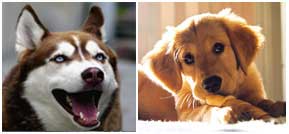


![]() Home
Home
![]() Dogs
Dogs
![]() -
Dog breeds
-
Dog breeds
![]() -
- Alaskan Malamute
-
- Alaskan Malamute
![]() -
- Bouvier des Flandres
-
- Bouvier des Flandres
![]() -
- Boxer
-
- Boxer
![]() -
- Dachshund
-
- Dachshund
![]() -
- Dalmation
-
- Dalmation
![]() -
- Doberman
-
- Doberman
![]() -
- German Shepherd
-
- German Shepherd
![]() -
- Pug
-
- Pug
![]() -
Dog training
-
Dog training
![]() -
- Becoming Alpha
-
- Becoming Alpha
![]() -
- Young Puppy
-
- Young Puppy
![]() -
Dog health
-
Dog health
![]() --
Bringing Puppy Home
--
Bringing Puppy Home
![]() --
Pup Stages
--
Pup Stages
![]() -
Dog rescue
-
Dog rescue
![]() -
- Adopt A Dog
-
- Adopt A Dog
![]() -
- Dog Rescue UK
-
- Dog Rescue UK
![]() -
- Interview at a Pound
-
- Interview at a Pound
![]() -
- A Life in Chains
-
- A Life in Chains
![]() -
- Letting Go
-
- Letting Go
![]() -
- Rainbow Bridge
-
- Rainbow Bridge
![]() Cats
Cats
![]() Horses
Horses
![]() Animal
rescue
Animal
rescue
![]() Pet
Insurance
Pet
Insurance
![]() About us
About us
![]() Site Map
Site Map
![]() Email
Email
The Dalmatian: A brief history of this breed
 By Hector Sanchez
By Hector Sanchez
The breed was named after Dalmatia, a place in Western Yugoslavia on the Adriatic sea, which at one time was part of Austria. However, the dogs were known in other parts of the world as well long before they acquired the name of Dalmatians.
Historians have found references of this beautiful dog since the mid 18th century but also in other parts of the world the historians found that the breed was shown in several types of unique art like engravings, paintings, models and early writings which have accounted for the presence of spotted dogs of the same size throughout Africa, Asia and Europe.
History also tell us that ancient gypsies carried these dogs in their trips around the world, which also explains the great widespread and popularity of the breed.
Later on, dalmatians were brought to Great Britain by members of the British upper classes who made trips to Europe and would often come back accompanied by some of the striking spotted dogs.
After dalmatians were
adopted by the British aristocracy who used them to accompany their
carriages, the dalmatian soon became a feature of these processions.
The dogs were taught to station themselves beneath the rear axle of
the coach, and in some cases to trot underneath the pole separating
the
horses. They were also taught to lead the procession, trotting along
ahead of the first horse, which was an impressive sight to see!
When, in 1860, Great Britain held its second dog show there were only five breeds represented. These included Dalmatians, and so far as history records, this was the breed's initial appearance in dog show competition.
Were it not for a gentleman named Fred Kemp, who was
President of the British Dalmatian Club and a third generation owner
of
this breed with which he himself was involved for more than half a
century, Dalmatians might not have survived World War I.
Mr. Kemp is credited with having kept alive dogs in his kennel through the difficult and in many cases devastating period between 1914 and the Armistice in 1918, providing breeding stock at the end of this period.
It is exciting to contemplate what happened to Dalmatians in England at the close of World War I. They fairly leaped ahead in popularity, the two Dalmatians registered with the Kennel Club in 1918 having increased to 125 by 1925 and to 889 by 1932.
When the world famous dog show resumed, following World War I, there were two Dalmatians entered. In 1934, no fewer than 199 Dalmatian entries filled the classes for the breed, of which 15 were provided.
The dalmatian also became known for his very famous role of being a " firehouse dog". This was said to have started with the dogs being used as ratters, for the function of killing vermin in London's stables and firehouses, which they did with expertise.
Today, many Dalmatians can still be seen riding on the fire trucks with their masters. Dalmatians are still considered as the mascot and are often found in firehouses around the world.
But the Dalmatian is not only known as the "firehouse dog",
he also
worked in war times as a sentinel, served as shepherd's dogs and as
draft dogs. They also have been seen in circus shows as "assistant" of
the clowns, their intelligence, aptitude, and showy appearance having
fitted them particularly well for this activity.
About the Author:
Hector Sanchez runs the online store My-dog-supplies.com specialized
in electronic
dog fences . To see how you can benefit from electronic
dog fences check the free
video here.
|
||


